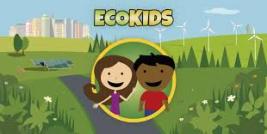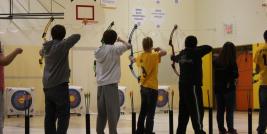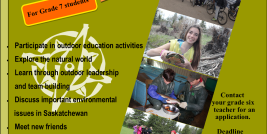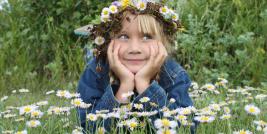| Curriculum Connections |
|
Outcomes
|
Indicators
|
Grade 5
|
Science
|
HB5.1 Analyze personal and societal requirements for, and the impact of, maintaining a healthy human body.
|
j
|
|
Health
|
USC5.7 Assess the importance of self-regulation and taking responsibility for one’s actions.
|
g,i
|
Grade 6
|
Science
|
DL6.1 Recognize, describe, and appreciate the diversity of living things in local and other ecosystems, and explore related careers.
|
b,c,d
|
|
Science
|
DL6.3 Analyze the characteristics and behaviours of vertebrates (i.e., mammals, birds, reptiles, amphibians, and fish) and invertebrates
|
a
|
|
Science
|
DL6.4 Examine and describe structures and behaviours that help:
-
individual living organisms survive in their environments in the short term
-
species of living organisms adapt to their environments in the long term.
|
b,c,d,f
|
|
Social Studies
|
DR6.1 Analyze the impact of the diversity of natural environments on the ways of life in Canada and a selection of countries bordering the Atlantic Ocean.
|
a
|
|
Phys Ed
|
PE6.10 Apply controlled use of selected movement skills and variations (i.e., locomotor, non-locomotor, and manipulative skills) as well as safe and environmentally friendly behaviours while participating in a variety of alternate environment activities.
|
d,e,f
|
Grade 7
|
Science
|
IE7.2 Observe, illustrate, and analyze living organisms within local ecosystems as part of interconnected food webs, populations, and communities.
|
b,d,i
|
|
Science
|
IE7.4 Analyze how ecosystems change in response to natural and human influences, and propose actions to reduce the impact of human behaviour on a specific ecosystem.
|
f,g
|
|
Social Studies
|
DR7.2 Appraise the impact of human habitation on the natural environment in Canada, and in a selection of Pacific Rim and northern circumpolar countries.
|
b
|
Grade 8
|
Science
|
WS8.1 Analyze the impact of natural and human-induced changes to the characteristics and distribution of water in local, regional, and national ecosystems.
|
a,f
|
|
Science
|
WS8.2 Examine how wind, water, and ice have shaped and continue to shape the Canadian landscape.
|
a,d
|
|
Science
|
WS8.3 Analyze natural factors and human practices that affect productivity and species distribution in marine and fresh water environments.
|
b,c
|
|
Social Studies
|
RW8.3 Critique the approaches of Canada and Canadians to environmental stewardship and sustainability.
|
a,b
|
|
Health
|
USC8.1 Analyze and establish effective strategies of support for purposes of helping others increase health-enhancing behaviours.
|
b,g
|
|
Health
|
USC8.6 Examine and assess the concept of sustainability from many perspectives, and develop an understanding of its implications for the well-being of self, others, and the environment.
|
b,c,d,e,g,h,j,k
|
| |
Phys Ed
|
PE.8.8 Apply and adapt selected activity-related skills (e.g., carrying, paddling, gripping, hanging, wheeling, digging, fire building, snow ploughing, compass reading) and strategies required for participation in alternate environment activities (e.g., backpacking, hiking, cycling, overnight camping, canoeing, snowshoeing, wall climbing, in-line skating, skate boarding, cross-country skiing, tracking, roping, dog sledding, skating, orienteering, downhill skiing, tobogganing, quinzhee building).
|
a,c,f,i
|





